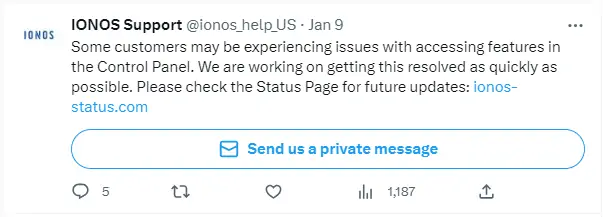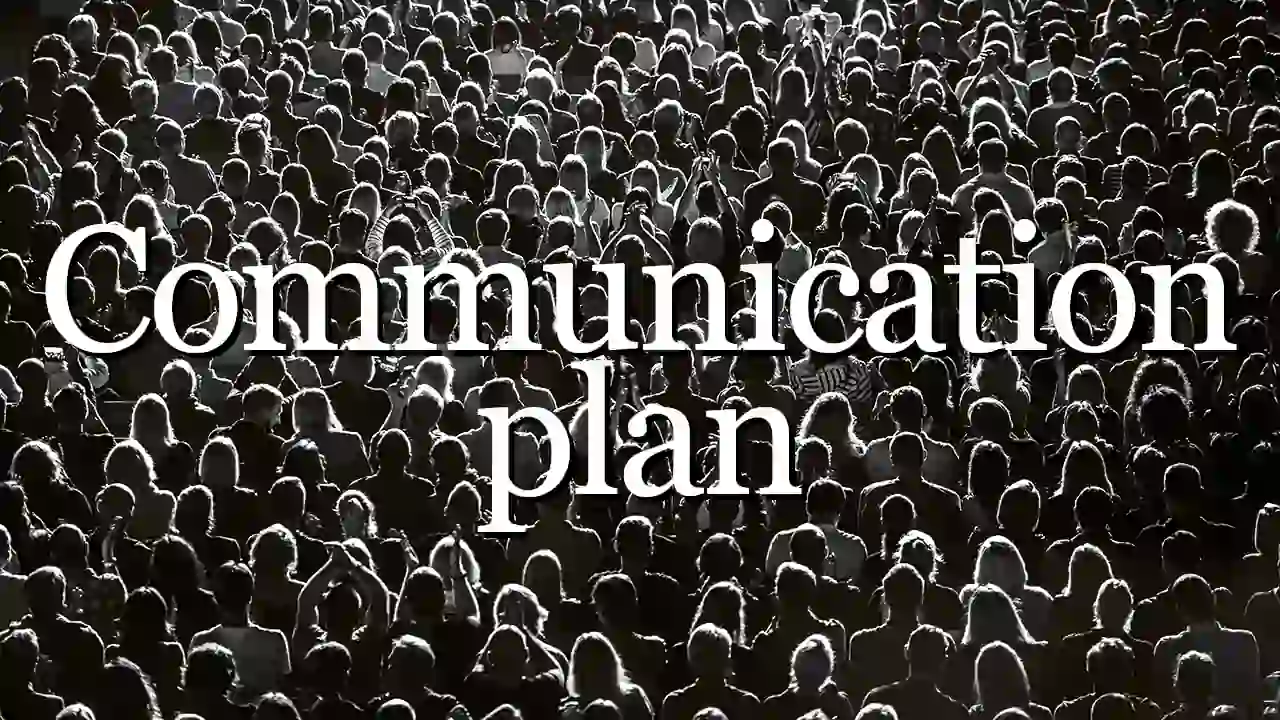Any organization, no matter how small, faces a difficulty at some point that goes beyond public opinion. Besides providing a real solution to the problem, the way it communicates is an opportunity to strengthen the image of that organization. This is accomplished through crisis communication.
Every crisis is an opportunity to demonstrate commitment.

Do you need help with crisis communication?
Send an email:
hola@apablo.com
Table of Contents
What is crisis communication?
Crisis communication is a series of actions undertaken by an organization to address and inform the public about an internal problem that has transcended into public awareness.
These communicative decisions are part of a broader strategy aimed at mitigating the negative impact of a crisis on the organization’s reputation.
Crisis communication can respond to various types of difficulties, ranging from specific criticisms by small groups to major problems that jeopardize the organization’s existence.
It is not something used as a last resort, as there are many types of crises.

In any case, I want to emphasize that the actions I am going to describe in this article are just a part of the entire strategy. Communication may be helpful at a given moment, but to solve a crisis, real measures beyond public relations must be taken.
For example, imagine a company selling a defective product, and thousands of consumers complaining about it.
Simply apologizing would not be enough. The defect in the product would undoubtedly need to be fixed.
It’s obvious, but it needs to be said 😊
A crisis is always unpleasant, but it can also be an opportunity to strengthen an organization’s image.
Common examples of crises
A crisis can take various forms and have more or less severe consequences.
Understanding this is essential because when we think of a ‘crisis,’ the first thing that comes to mind is a major, irreparable catastrophe. However, many situations require crisis communication actions when they are, in reality, minor problems.
Each organization has its circumstances, but some common examples of crises may include:
- Worker strikes
- Product defects
- Technical errors and accidents
- Corruption and scandals
- Non-compliance with regulations
- Boycotts and sabotage

How to perform crisis communication
To carry out appropriate crisis communication actions, it is common to establish procedures for each case.
When dealing with common inconveniences, such as a technical error affecting some users, action protocols are created to inform them. For instance, through social media posts, the organization’s website, or email notifications.
These procedures are included in a specific section of the communication plan.
However, when the crisis situation is not covered by existing protocols, it is advisable to create a crisis management team.
But what is a crisis management team?
A crisis management team is composed of individuals with organizational authority who are responsible for making appropriate decisions to address the difficulty.
It may consist of board representatives, department heads, legal personnel, and, of course, the communications manager.
A crisis management team does not have a specific format and can be composed of different individuals depending on the organization’s size and type. For instance, if it’s a two-partner company, it could be just those two individuals.
This team will perform the following actions:
Gather and study information
Having as much information as possible facilitates the development of a crisis communication plan or making timely decisions.

Some of the most critical data that can be obtained include:
- What has happened?
- Is this the first time this difficulty has arisen?
- Who does it affect?
- What coverage has it received in the media and on social networks?
- Does it jeopardize the viability of the organization?
- What opportunities arise from this situation?
However, if we are drafting the crisis section of a communication plan, it would be advisable to know more about the organization: history, trajectory, regular media contacts, coverage, previous difficulties, and others.
Consulting the law
Depending on the adversity we face, it may be necessary to seek legal advice.
As mentioned earlier, crisis communication is just one part of a broader strategy that requires other types of decisions. Many of these decisions will be directly related to the laws and regulations.
Consensus on a crisis communication strategy
Once the crisis management team has studied all the information about the incident, received legal advice, and decided how to address the difficulty, it is time to decide how to communicate.
The crisis communication strategy primarily depends on the severity of the issue. This severity is determined by the coverage extent. If something has happened, and nobody is aware of it, there is no need to provide any explanation, nor is it advisable.
However, if the media has picked up on the situation, or users are complaining on the internet, it is essential to consider what to do.
Maintaining silence
Maintaining silence is the easiest option, but it gives the organization an image of indifference that the public generally does not appreciate.

Furthermore, by not providing explanations, we miss the opportunity to demonstrate the organization’s commitment to society.
Not having an official version in response to an apparently true event can raise suspicions among the media, consumers, members, and other people associated with the organization.
This strategy is only recommended if the conflict has had minimal dissemination.
Denying everything
Denying responsibility might work in a court of law, but when society and its individuals are the judges, the matter is not so simple.
The organization’s image could be damaged if the media ecosystem (journalists, users, etc.) somehow demonstrates the existence of this responsibility.
This crisis communication strategy is advisable when false accusations are being made or the chances of proving responsibility are very low.
Blaming others
An entity can also point to third parties as responsible for a problem with media repercussions.
However, just like the “denying everything” strategy, it could backfire if this shift of responsibility is not believable. Even worse if it is proven that the responsibility indeed lies with the organization in question.
This strategy should only be used when there is certainty and evidence that the responsibility lies with that third party. Otherwise, it could lead to committing the crime of defamation.
Admitting responsibility
Admitting responsibility, if it exists, is the best long-term strategy for an organization’s image. At first glance, it may seem like a bad decision as it could affect the organization’s economy, but when there is clear evidence of a problem, it is undoubtedly the best choice.
It should be seen as an investment in social commitment and a more honest image for the future – perceiving it as an opportunity.
If this strategy is chosen, the message will have to be carefully crafted.
Keep reading, and I’ll tell you how 😊
Deciding the message
Another crucial aspect of crisis communication, regardless of the chosen strategy, is deciding on the message to be conveyed.

The message is the organization’s official response to a specific crisis situation.
It is essential to be very careful with the message and think it through thoroughly before giving it the green light. Constructing it well from the beginning is vital to avoid subsequent corrections.
While it is wise to rectify mistakes, in the midst of a crisis and with many interests at stake, it is not advisable to change opinions on the fly. It may appear opportunistic.
We must create the message with the intention that it becomes the final version.
The message should answer some very simple questions:
- What has happened: The organization’s official version of the events.
- How it is being resolved: Specific actions that the entity is taking to address the difficulty.
- How it will be prevented from happening again: New protocols to prevent the problem from recurring.
Once the message is decided, it is crucial that all communication agents within the organization learn it and modify their speeches to align with it.
There can be no contradictions. Narrative bridges must be created between the crisis response and the rest of the communication materials used up to that point.
The message must meet several requirements:
It must be compatible with the strategy
The message must be consistent with the chosen strategy. If the decision is to ignore a product defect, nobody from the organization should accidentally mention it.
If the choice is to blame a third party, all explanations must be in line with that.
And if admitting responsibility is chosen, it doesn’t make sense for a company representative to appear in the media denying it.
There must be unity
The organization as a whole must provide the same response, the same official version, regarding the crisis communication situation.

I would even suggest using exactly the same words when referring to that situation.
For example, if it is an organization with branches in several countries, it cannot be the case that one thing is being said in France while a different story is told in Spain.
Likewise, different messages cannot be conveyed on social media and through the press office. Not only does the strategy have to match, but the message must be uniform and shared by the entire entity.
It must be truthful
The message not only has to be true but must also appear to be true. Therefore, it should be supported by real data and believable arguments.
The simpler and more direct the message, the better. Dense arguments carry a higher risk of inaccuracies that could be perceived as lies.
The truth is simple, straightforward, and direct.
Communicated with transparency
The message must be conveyed transparently. Receivers should feel that no information is being withheld from them.
This can be challenging because there might be a case where important data, omitted by the organization, appears in a communication channel.
This could portray a very negative image of the organization, as it could be accused of hiding information. The entire crisis communication strategy might become useless if something like that happens.
Issued promptly
Crisis communication is not something that can be delayed until tomorrow. The response must be provided on the same day.
If the crisis becomes public in the morning, there should already be a response in the afternoon.
The media, social networks, and the public won’t wait for days to hear an organization’s version. During that time, rumors may emerge that worsen the situation.
However, the message must be well-crafted. Speed does not justify an incoherent or poorly constructed version. Credibility is more important than speed, but certainly, the response should not be delayed.
Defining target audiences
Like any act of communication, the message must have specific recipients. Depending on the situation, the target audience could be different, or it could be the same for all. Each audience may use different communication channels.

As a general rule, and based on the chosen strategy, we will use only those channels where the crisis situation has been disseminated.
It doesn’t make sense for an organization to disclose its own difficulties in channels where they have not been discussed. It would be like shooting oneself in the foot.
We will only transmit the message to other channels when the situation is extreme, or its lack of communication poses a risk to the organization’s image.
For example, if there has been a major uproar on social media, but the problem has not made it to mainstream media, it does not make sense to focus on journalists. This would be publicizing our own mistakes, something that is not advisable.
Some examples of target audiences may include:
- Media outlets
- Employees
- Customers
- Suppliers
Choosing a spokesperson in crisis communication
The spokesperson will be the person responsible for conveying the message chosen by the crisis management team. In fact, they will be the only person authorized to provide explanations regarding the crisis.

A good spokesperson projects honesty, composure, and transparency. They have excellent communication skills and express themselves clearly. They know how to respond politely to difficult questions and do not lose their composure when faced with opposition.
It should be considered that the spokesperson may experience image wear and tear throughout the process. After all, the public will associate their image with the crisis being faced.
That’s why it is not recommended for the spokesperson to be the top leader of the company, maybe not even the top responsible for an area.
Furthermore, it is preferable to keep the same spokesperson until the entire problem is solved. This way, all the strain will fall on the same person. Once the crisis has passed, if it has been severe, there may need to be resignations, and the spokesperson could be one of them.
Conclusion
In this article, I have described what crisis communication is, provided examples, and explained how to define and execute a strategy.
In reality, it is a matter of common sense. If there is a genuine intention to solve problems and demonstrate commitment to society, everything should go well.
Since each case is different, it is challenging to provide a more detailed answer on how to approach crisis communication. However, what is clear is that, regardless of the situation, it is always an opportunity to show the public that an organization strives to do things right.
In any case, I hope this article has been useful to you. If you want help with your communication, feel free to contact me at: hola@apablo.com











Leave a Reply Cancel reply